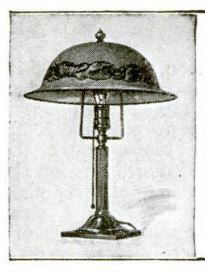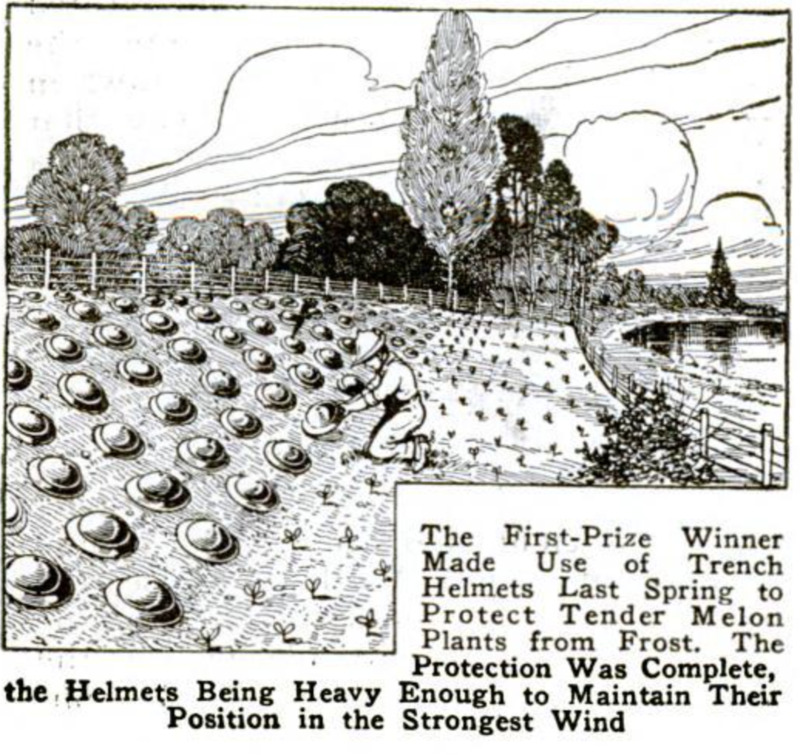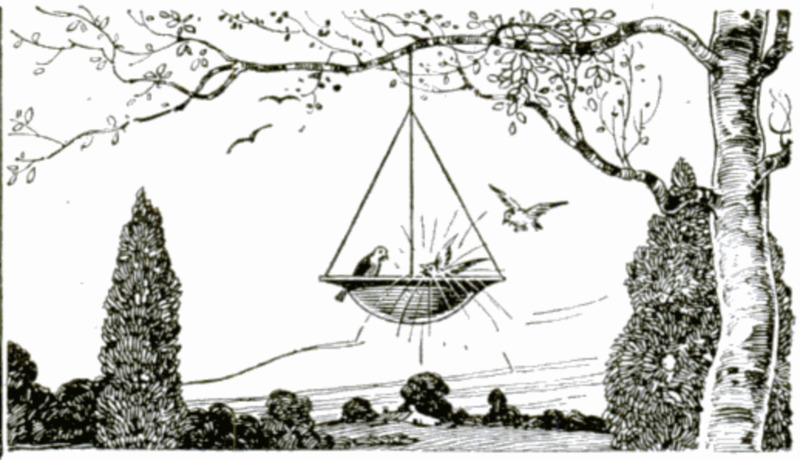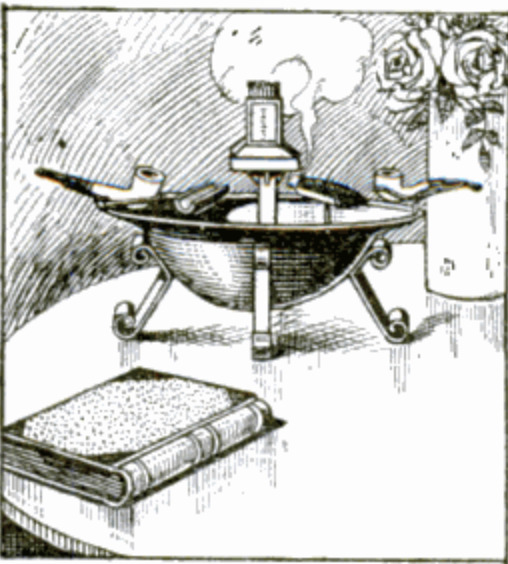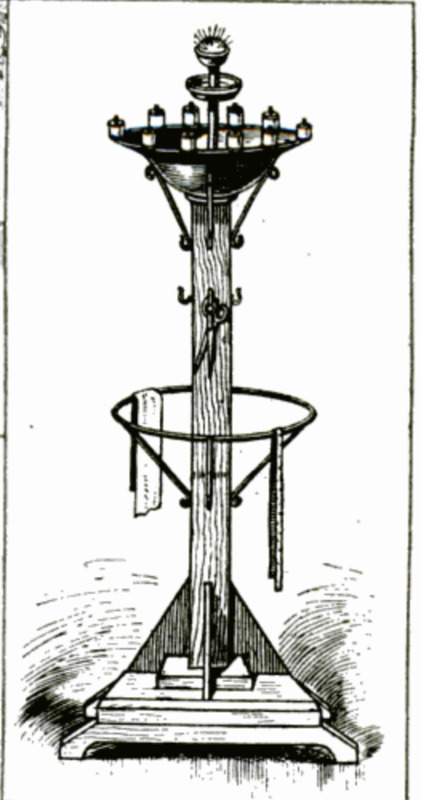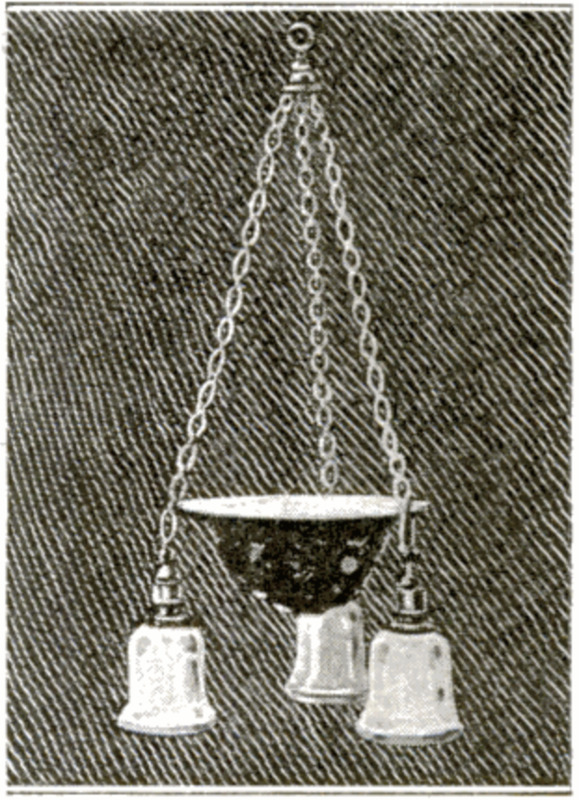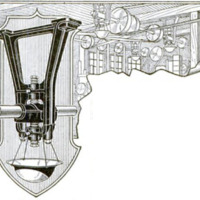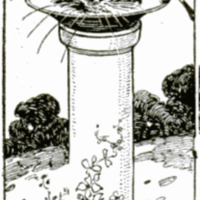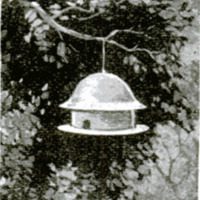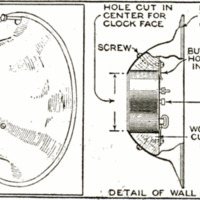-
Titolo
-
Utilizing new steel trench helmets
-
Article Title and/or Image Caption
-
Utilizing new steel trench helmets
-
extracted text
-
IN SELECTING the articles in our recently closed prize competition, on
"How to Use New Trench Helmets, which the government has several millions for sale, it has been the intention of the judges to select those that seemed most practical in use, not too difficult to make, and most likely to provide demand for the largest sale of the helmets. Many of the articles submitted were more ornamental than those selected, and as useful, but required considerable effort to make; this was considered likely to lessen the consumption of the helmets. Although not in the prize-winning class, several other ideas sufficiently meritorious are presented along with the winning ideas.
Trench Helmets Protect Plants from Frost
The premier prize winner is J. A. Goodall, of Mountain Home, Ida., who used several of the helmets in his garden last spring to protect early plants from frost when the temperature fell too low. The protection afforded the plants was so complete that he has taken steps to secure a sufficient number of helmets to protect his entire melon crop next spring.
He intends to plant about two acres of melons, and by protecting them in the manner described, hopes to get his crop on the market about a month earlier than usual. The helmets are specially fitted for the protection of such plants as melons, squashes, and the like, which have no upright stalk. The helmet is heavy enough to remain in place during the hardest wind.
Oil-Drip Pans Made from Helmets
Most countershaft and lineshaft bearings in industrial establishments must be
fitted with an oil-drip pan of some kind to prevent the oil from dripping over whatever might be under-neath. These drip pans are of every type and character, most of them so flimsy and of such insufficient capacity that they are little better than second prize, Weehawken, N. J., had in mind these facts when he submitted his idea, which is illustrated herewith. Four holes are drilled in the rim of the helmet and stiff wires are inserted and hooked around the shaft hanger, resulting in a singularly rigid and neat-appearing drip pan of ample capacity.
Trench Helmets Used for Bird Baths
Truman R. Hart, winner of the third prize in the contest, lives in Ashtabula, Ohio, and his idea utilizes surplus helmets for bird baths, suspended from the branches of a tree, or mounted upon a pedestal. In the latter case, an 8-in. section of drain tile is used for supporting the water-filled helmet. If the bath is to be suspended from a tree, as illustrated, three or four wires will be needed, for which holes must be drilled through the rim. but if means for drilling are not at hand, a wire ring an inch or so less than the diameter of the helmet, may be placed about it, and the suspension wires hooked or soldered to the ring. This idea, as well as the one described as the winner of the fourth prize, can be utilized by schoolboys and others as a means of making extra money, by making and selling bird baths and houses of the type described. A small wooden block should be placed in the bottom of the bath, so that the birds may perch upon it.
Bird Houses Made from Helmets
The fourth prize was won by the idea submitted by Geo. A. Stephen, of Ottawa, Ill., describing the construction of a bird house, using a trench helmet, as shown in the photograph and drawing. The strap and cushion are removed from the helmet. A wire loop, or ring, is placed through the hole in the center of the crown. The base is cut from a piece of galvanized iron, upon which the outline of the helmet has been traced. A 5-in. length of 8-in. furnace pipe is placed in the helmet, and slots are cut on opposite sides so as to allow it to pass the metal strap loops. Next the arched door is cut on the lower edge of the piping. If intended as a wren house, a hole the size of a quarter is large enough. Two 15-in. pieces of wire are placed through the strap loops and bent at the center. Four holes, two on each side, are punched through the base, and the ends of the wire are inserted, being brought together and twisted or tied as neatly as possible. Bird houses should be put out in the fall, in order that the earliest arrivals will have accommodations and so that there will be no odor of paint left.
Smoking and Sewing Sets from Helmets
Coming from outdoors into the home, the two ideas submitted by Geo. H. Cappel, Wilmer, Ala., a smoking set and a sewing stand, shown in the drawings, are very useful. In the former, the helmet is supported by four wrought-iron legs, riveted to the sides, a matchbox holder being riveted to the center of the crown, and ap-propriate. holders for pipes and cigar to the rim. The sewing stand is built somewhat along the same lines, with the difference that the helmet is supported on a wooden pedestal. Rising from the center of the helmet is an upright piece that holds a pincushion and tray for pins. Short lengths of rod are riveted around the outside of the rim as holders for the different colors and sizes of thread.
A Trench-Helmet Clock
Properly finished, the trench-helmet-clock idea submitted by V. N. Perry, Buffalo, N. Y., makes an effective and attractive wall ornament, although considerable work is necessary to cut the hole through the crown, unless a lathe or milling machine can be used. After a hole of a diameter sufficient to accommodate the clock is obtained, a wooden block is made to fit inside the helmet and fastened with two or three screws. A hole is bored through the block large enough to allow the clock to slip in easily, where it is held in position with metal buttons.
A Trench-Helmet Lighting Fixture
Fred C. Bass, Fernie, B. C., did his stretch in the army and retains his "Carnegie derby" as a souvenir of his experiences, by converting it into the attractive electric-lighting fixture shown in the photograph. The outside of the helmet was polished as smoothly as possible and about 40 cap, collar, and shoulder devices, representing the many regiments of the American and Canadian forces, were soldered all over the crown. A row of large-sized coat buttons was soldered around the outer rim of the helmet. The outside was given a coat of gold bronze, and the inside was treated with white enamel to reflect the light rays from the electric lamp concealed within the helmet. A canopy and metal chains to suspend the fixture from the ceiling, together with three sockets and shades that are supported by the lower ends of the chains, complete a very fine piece of work.
-
Lingua
-
eng
-
Data di rilascio
-
1921-12
-
pagine
-
955-957
-
Diritti
-
Public Domain (Google digitized)
-
Archived by
-
Marco Bortolami
-
Marco Bortolami (editor)
